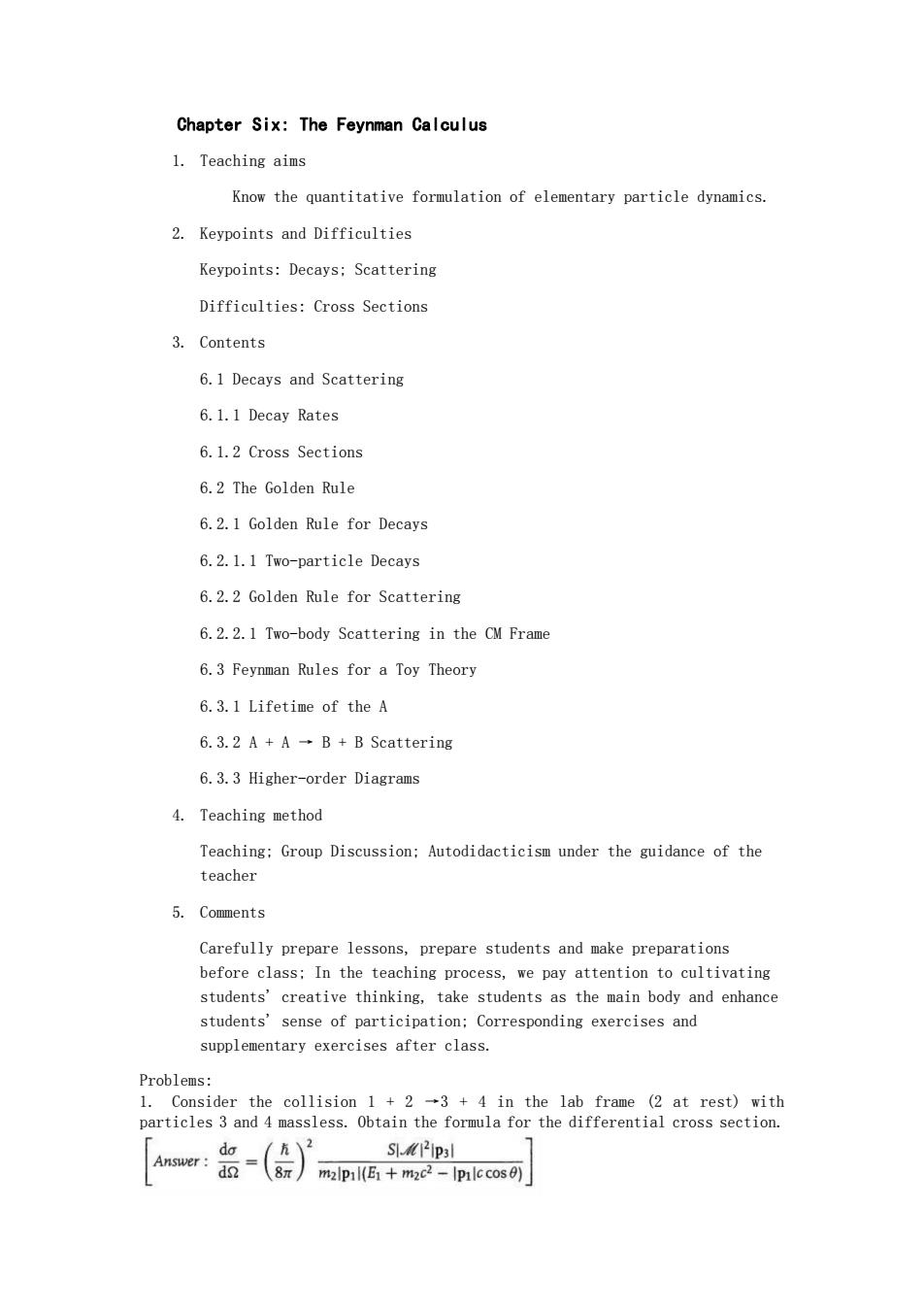正在加载图片...

Chapter Six:The Feynman Calculus 1.Teaching aims Know the quantitative formulation of elementary particle dynamics. 2.Keypoints and Difficulties Keypoints:Decays:Scattering Difficulties:Cross Sections 3.Contents 6.1 Decays and Scattering 6.1.1 Decay Rates 6.1.2 Cross Sections 6.2 The Golden Rule 6.2.1 Golden Rule for Decays 6.2.1.1 Two-particle Decays 6.2.2 Golden Rule for Scattering 6.2.2.1 Two-body Scattering in the CM Frame 6.3 Feynman Rules for a Toy Theory 6.3.1 Lifetime of the A 6.3.2 A +AB+B Scattering 6.3.3 Higher-order Diagrams 4.Teaching method Teaching:Group Discussion:Autodidacticism under the guidance of the teacher 5.Comments Carefully prepare lessons,prepare students and make preparations before class:In the teaching process,we pay attention to cultivating students'creative thinking,take students as the main body and enhance students'sense of participation;Corresponding exercises and supplementary exercises after class. rosider the colision4 in the lab frame at rest)with particles 3 and 4 massless.Obtain the formula for the differential cross section.Chapter Six: The Feynman Calculus 1. Teaching aims Know the quantitative formulation of elementary particle dynamics. 2. Keypoints and Difficulties Keypoints: Decays; Scattering Difficulties: Cross Sections 3. Contents 6.1 Decays and Scattering 6.1.1 Decay Rates 6.1.2 Cross Sections 6.2 The Golden Rule 6.2.1 Golden Rule for Decays 6.2.1.1 Two-particle Decays 6.2.2 Golden Rule for Scattering 6.2.2.1 Two-body Scattering in the CM Frame 6.3 Feynman Rules for a Toy Theory 6.3.1 Lifetime of the A 6.3.2 A + A → B + B Scattering 6.3.3 Higher-order Diagrams 4. Teaching method Teaching; Group Discussion; Autodidacticism under the guidance of the teacher 5. Comments Carefully prepare lessons, prepare students and make preparations before class; In the teaching process, we pay attention to cultivating students' creative thinking, take students as the main body and enhance students' sense of participation; Corresponding exercises and supplementary exercises after class. Problems: 1. Consider the collision 1 + 2 →3 + 4 in the lab frame (2 at rest) with particles 3 and 4 massless. Obtain the formula for the differential cross section